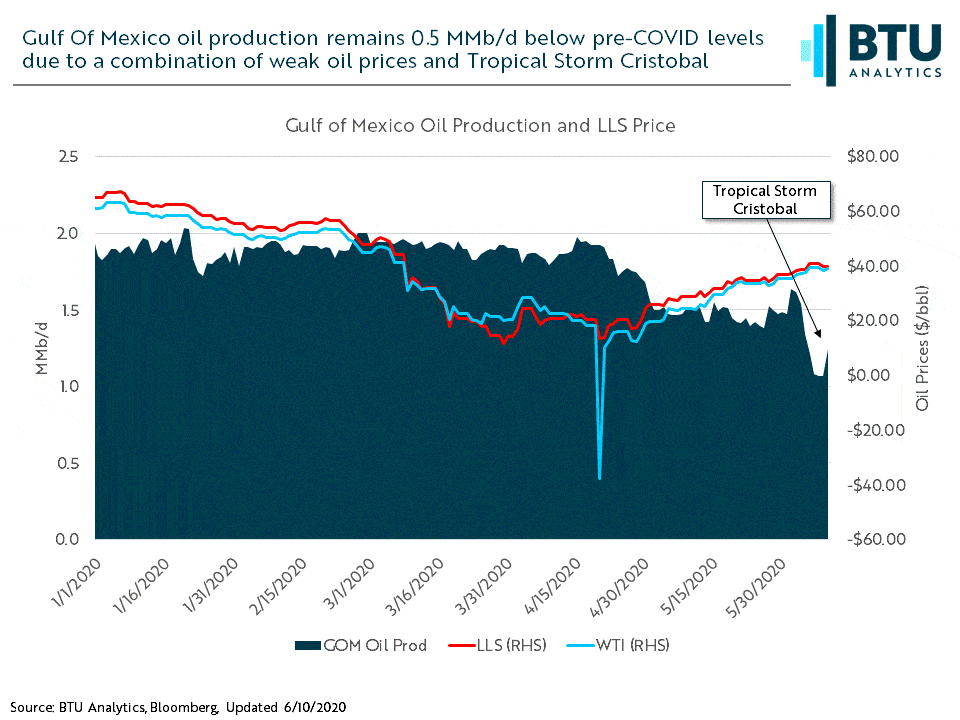The 2020 hurricane season is off to a rapid start this year with the first two storms formed in May and most recently Tropical Storm Cristobal on June 2. In a market that is already experiencing more uncertainty and volatility than normal due to the impacts of COVID-19 on global demand, hurricane season introduces another expected, but unpredictable variable. Gulf of Mexico oil production has begun rebounding from a trough of 1.1 MMb/d reached over the weekend due to shut-ins from Tropical Storm Cristobal, but remains over 0.5 MMb/d below pre-COVID production levels of 1.9 MMb/d. Hurricane season is just beginning and additional disruptions could occur through the summer and impact oil prices.

Prior to Tropical Storm Cristobal, GOM oil production had already been impacted due to oil prices. After WTI oil prices went negative on April 20, 2020, it was only a matter of days before offshore operators started to shut-in production. From April 1 to April 20, production averaged 1.9 MMb/d before declining to an average of 1.5 MMb/d in May. However, before Tropical Storm Cristobal, there were early signs of GOM operators slowly easing curtailed production volumes in response to prices rising into the mid to high $30/bbl range. Using BTU Analytics’ daily oil production model, during the first three days before Cristobal, production averaged almost 1.6 MMb/d, or 100 Mb/d higher than the May average. While the sample is only over a few days, the trend is consistent with what we’ve seen in US onshore plays, which shows that as prices have recovered into the $30/bbl range, operators are starting to ease oil production curtailments, as seen in the chart above.

Looking forward to the rest of the 2020 hurricane season and examining historical trends shows that the impacts of hurricanes on US Gulf Coast typically results in disruptions to both the supply and demand. The chart above highlights Gulf Coast monthly average refining demand, GOM oil production, and major hurricanes since 2005. It also highlights that the change in monthly demand is typically larger than the supply disruption. Some of this demand loss could be that these hurricanes also coincide with the start of the fall refinery maintenance season starting in September. However, the trend is that supply seems to be more resilient to hurricanes historically. Therefore, even as the travel and transportation logistics put in place by COVID-19 are easing, resulting in slowly rising oil demand from US refineries, hurricanes could pose a disproportionately larger risk to Gulf demand relative to GOM production. Hurricane season is yet another variable that could tip the tenuous recovery of the oil market back into more bearish pricing territory. For more information on BTU Analytics’ oil price views, request sample of our Oil Market Outlook Report.








